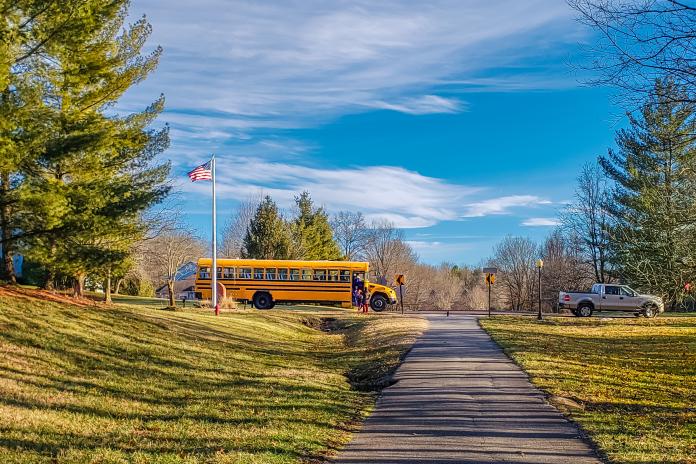STATEMENT: EPA Makes Nearly $1 Billion in Funding Available for Clean Heavy-Duty Vehicles Including Electric School Buses and Trucks

WASHINGTON (APRIL 24, 2024) — Today, the U.S. Environmental Protection Agency (EPA) launched its new 2024 Clean Heavy-Duty Vehicles Grant Program, designed to help transition heavy-duty vehicles – including school buses and trucks – to zero-emission models. EPA released program guidance and officially opened the funding program’s application portal on the agency’s website.
The program, created by the Inflation Reduction Act, makes nearly $1 billion in funding available to help municipalities, states, territories, Tribes, school districts and nonprofit school transportation associations replace existing heavy-duty vehicles with zero-emission vehicles, deploy zero-emission vehicle infrastructure, and train and develop workers. With $400 million allocated for projects in communities that suffer from poor air quality as defined by EPA’s National Ambient Air Quality Standards, this effort supports the aims of the Justice40 Initiative by emphasizing environmental justice efforts in communities disproportionately affected by pollution. There are over three million Class 6 and Class 7 vehicles currently in use in the U.S., spanning a wide variety of vehicle types and vocations, including school buses as well as refuse haulers and utility and delivery trucks.
EPA expects approximately 70% of the total funding will support school bus-related projects, with approximately 30% of funding for vocational vehicles. Grant applications will be due July 25, 2024, and awards are expected to be announced by the end of the year.
Following is a statement from Sue Gander, Director of WRI’s Electric School Bus Initiative:
“This program is a game-changer for communities across the country that want to transition to clean buses and trucks – and breathe cleaner air – but don’t have the means to do so. As we commemorate Earth Day this week, this is good news for neighborhoods everywhere.
“Heavy-duty vehicles emit huge amounts of air pollution that harm the health and wellbeing of our children and communities. Historically underserved communities living near depots, ports and highways are often more exposed to pollution from these vehicles, underscoring the equity benefits of this program. We are pleased to see the program cover vehicle costs as well as the purchase and installation of infrastructure, plus training for drivers and mechanics, all of which are essential for this transition.
“This program marks a critical milestone in the transition of the country’s nearly half a million school buses from diesel and other fossil fuels to the cleaner, quieter rides that our kids deserve. As demand for electric school buses grows, this grant program will bring health benefits to kids, drivers, and communities and support jobs in the clean economy. We encourage all eligible entities to apply and to start talking to their utilities now about planning for the necessary infrastructure.”
###
Additional details:
Applications will be open from April 24 to July 25, 2024, and EPA expects to announce grant awards by the end of the year. The 2024 Clean Heavy-Duty Vehicles Grant Program is comprised of two distinct sub-programs, the School Bus Sub-Program and the Vocational Vehicles Sub-Program. The School Bus Sub-Program is specifically for applicants replacing school buses, while the Vocational Vehicles Sub-Program provides funding for the replacement of non-school bus Class 6 and 7 vehicles, such as dump trucks, utility trucks, refuse haulers and street sweepers. EPA expects to award between 40 to 160 grants, split among the EPA regions. EPA also anticipates awarding at least 15 grant awards to eligible applicants from Tribes and territories. To apply, visit the EPA website.
Funding from this program can be used to cover the cost difference between replacing an existing heavy-duty vehicle with a zero-emission model and replacing it with a diesel-burning one. Funds can also be used to cover charging infrastructure, workforce development, and training and other administrative costs.
With a variety of zero-emission Class 6 and 7 vehicles available today, cities, states, territories, Tribes, school districts and other eligible entities can save thousands of dollars in operating costs. Additionally, the program will help reduce toxic emissions from diesel-burning school buses and other heavy-duty vehicles that are dangerous for children, drivers, and others and increase the risk of asthma and other respiratory illnesses.